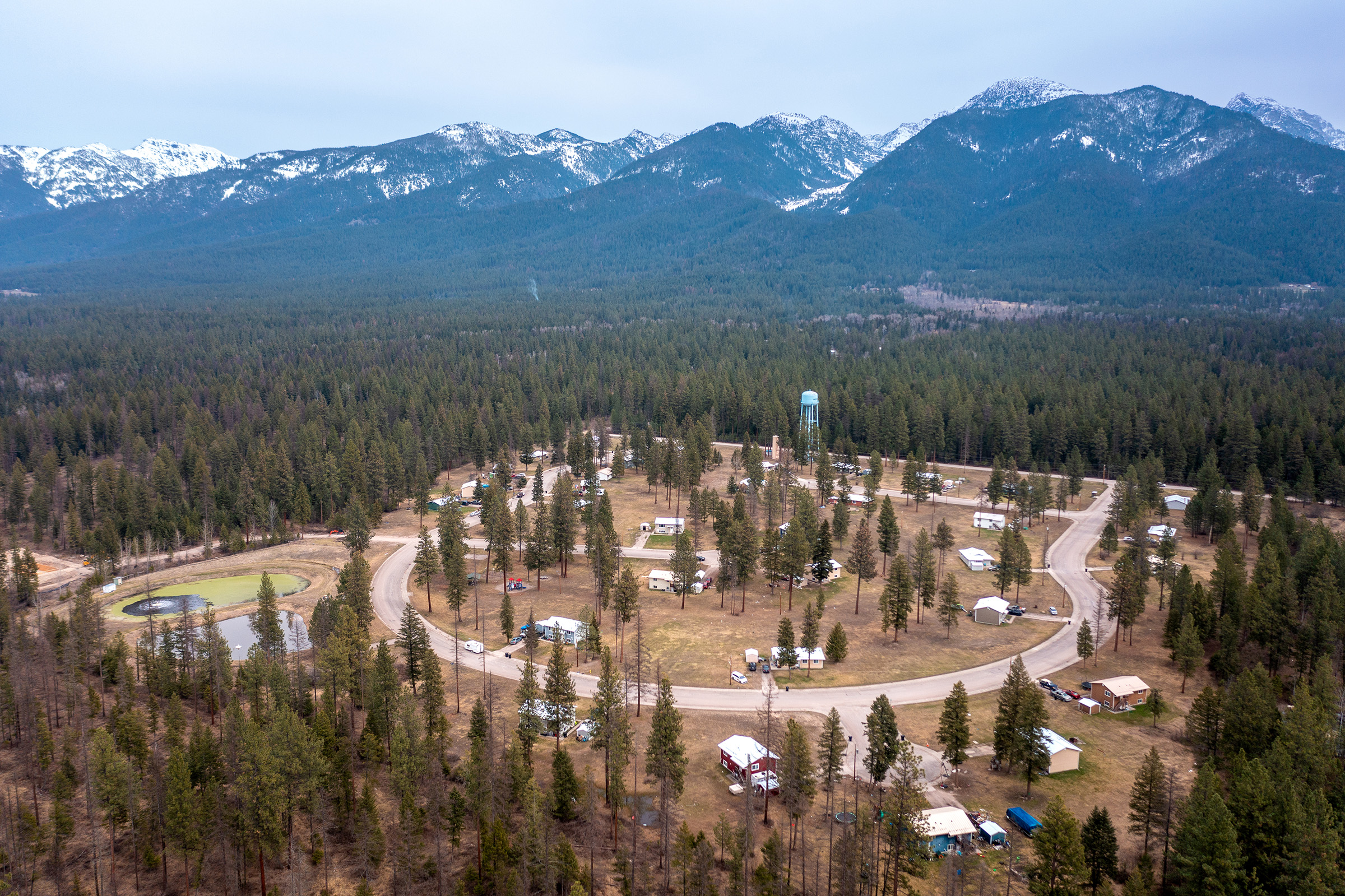An Empowered Future
The Tsis tsis’tas look to the sky for renewable energy
Story by Kai Williams. Photos by Tanner Ecker.
“I was here before electricity,” said Sandy Spang, 80, on a sunny March afternoon sitting in her electric recliner in front of a large window that overlooks her shed and the rolling hills around her home.
Indeed, Spang, an enrolled Tsis tsis’tas tribal member, lived in Ashland when the first power poles went up in the 1940s. The poles were built and installed by her father, Cornelius “Bee” Clayton Robinson, who is Northern Cheyenne and Lakota. The town was then finally powered with coal.
Now, Spang is one of the first handful of tribal members to try out a partially solar powered home.
Enlarge

“It was the same time the other lady in Lame Deer got on,” Spang said. “And they were putting her on as a, you know, a major demonstration of what this can do for you. But for us, it was like a total shock because we didn’t know they were gonna do that for us.”
Donica Brady, solar program associate of Indigenized Energy, joined Spang to check in with her, as Spang lives with multiple sclerosis. Because of her condition, she endures a great deal of pain and can only get around in an electric chair. With high medical assistance needs, the solar power helps Spang offset large energy bills.
That’s part of the reason why Indigenized Energy and the Tsis tsis’tas Tribe are working to install solar panels in the White River Community Solar Project. The project plan is to install solar panels to help power Busby High School, Busby’s Head Start program and the water pumping station in Busby.
In addition to helping power these facilities, there is a plan to install solar systems to benefit 15 different elders’ homes across the reservation. One of the systems will be in the shape of a morning star, the symbol proudly displayed on the Tsis tsis’tas flag.
The tribe also received a grant last year to build a renewable energy training center at Chief Dull Knife College in Lame Deer, which will create jobs and help more of the tribe get set up with renewable energy systems like solar power.
The 444,000-acre reservation sits on top of a rich coal reserve, but the tribe has no plans to extract from it. The tribe is aiming toward renewable energies to align with their “unwavering dedication to protecting both the environment and the well-being of our community,” said an emailed statement from tribal leadership. While burning coal adds to greenhouse gas pollution, the Tsis tsis’tas tribe envision “a future that prioritizes clean, sustainable, and renewable energy sources.”
Enlarge
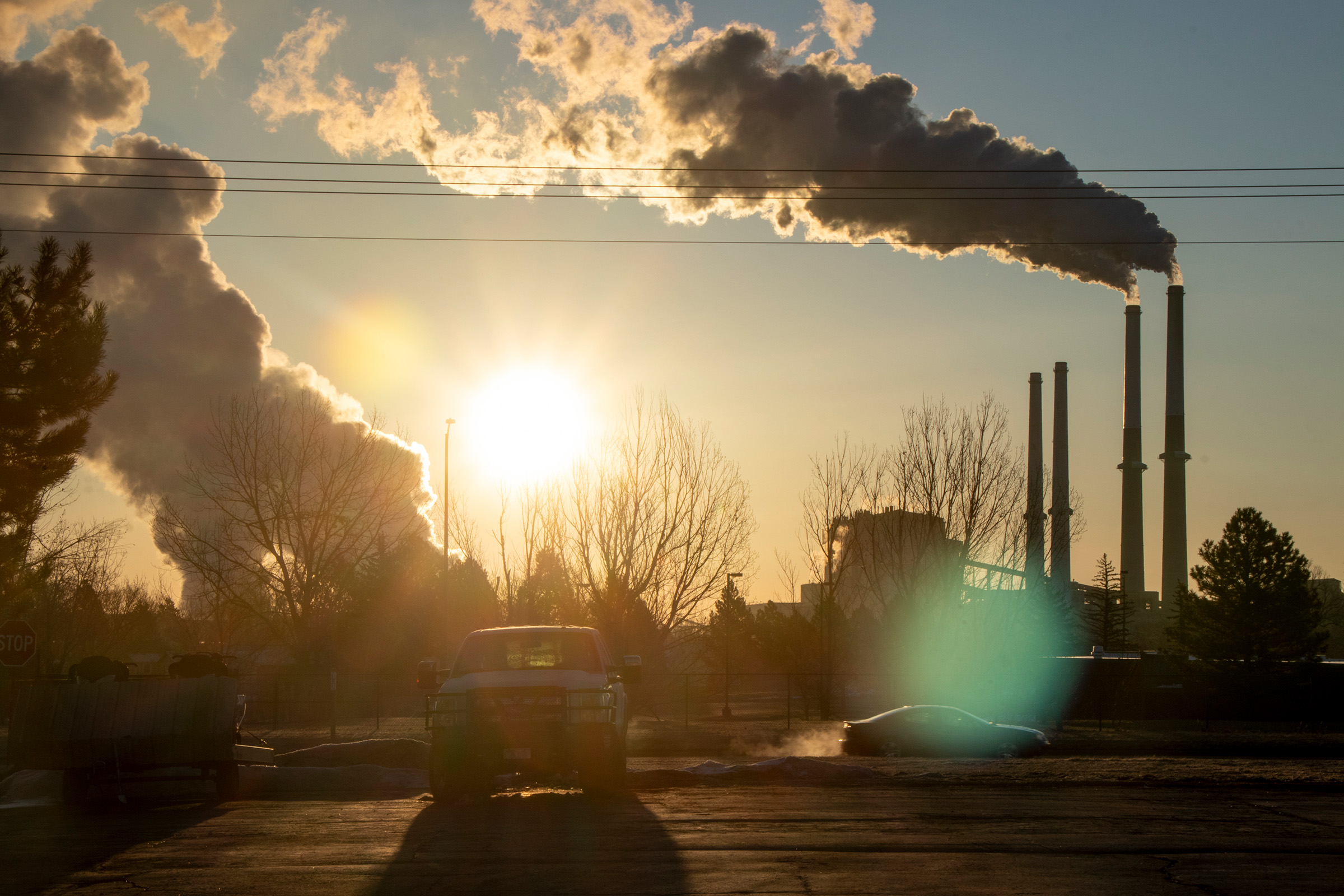
Making the switch
About 20 miles north of the Northern Cheyenne reservation is the town of Colstrip. Towering over the town are four smokestacks, two of which still burn coal daily.
Colstrip is home to the Westmoreland Coal Company and the Colstrip power plant. They sit across Highway 39 from one another. Both facilities employ large numbers of Colstrip residents, but tribal members living on and off the reservation drive north to work in the town.
In his past, Otto “Sonny” Braided Hair III, a Tsis tsis’tas tribal member and now a co-worker to Brady at Indigenized Energy, worked at the Colstrip power plant in the scrubbers, which is a part of the smokestack that cleans gases from the steam going through them. He worked in the 160-foot by 80-foot silos on the different levels of steam cleaning.
After three years at the power plant, Braided Hair III began his own construction company. Then the COVID-19 pandemic arose. Several supply issues tested his commitment to the industry.
Braided Hair III’s father, Otto Braided Hair Jr., invited him to apply for the assistant project manager position with Indigenized Energy. Braided Hair Jr. is a co-founder of Indigenized Energy, which recently branched off from the Indigenous Energy Initiative. The organization has six employees across the country. Three of them are Tsis tsis’tas.
When he was working for the power plant, Braided Hair III said his father understood that he was working there to provide for his family, not because he was ecstatic about working with non-renewable energy sources.
“Since I was young, that was burned into my mind is you got to look out for your people. You have to look out for your people,” Braided Hair III said.
Enlarge
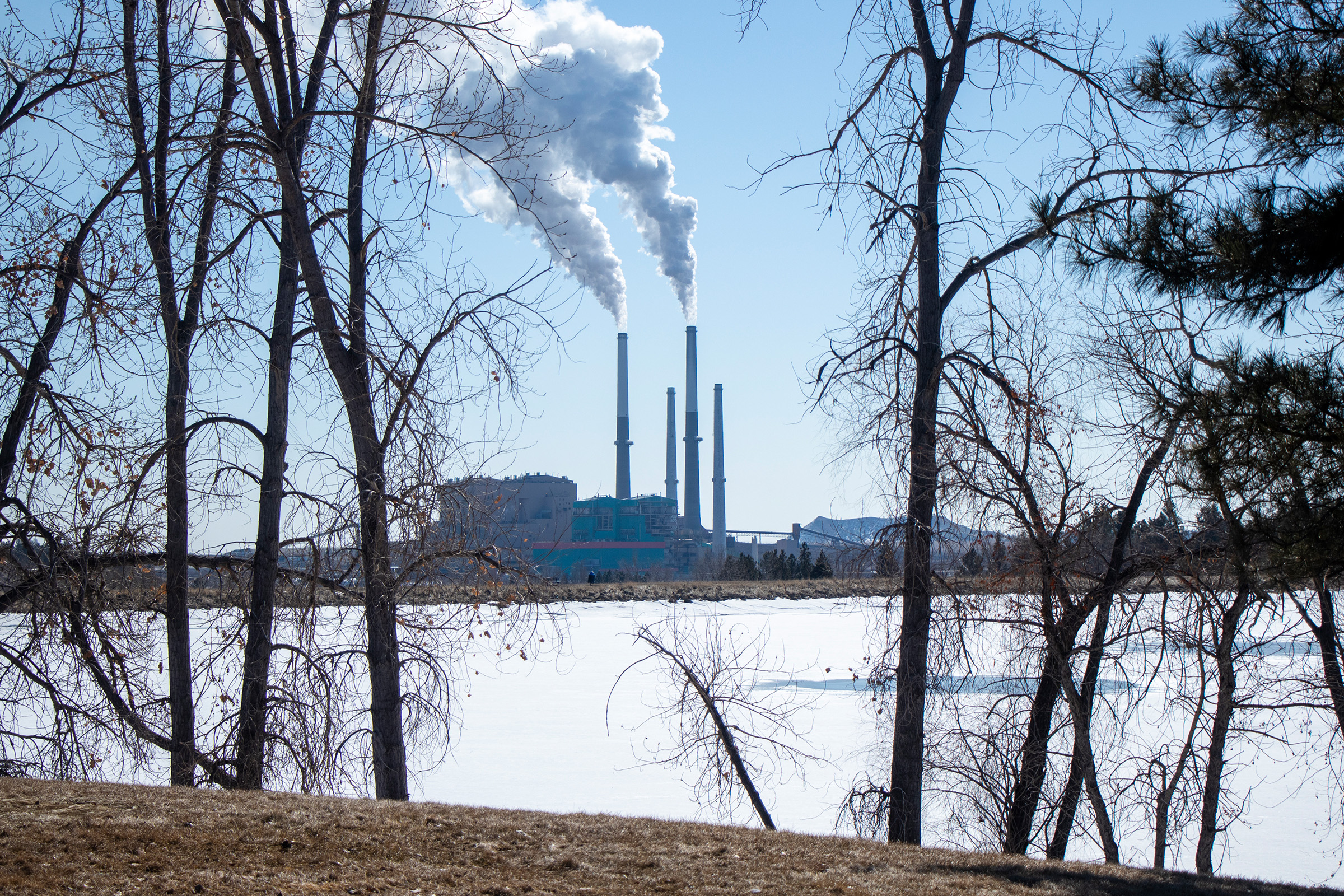
Working for the power plant provided for his family at the time. Now, Braided Hair III is looking to provide for his people beyond his immediate family.
He wants to help provide for his tribe.
Eventually, with Indigenized Energy, Braided Hair III would like to help other tribes provide for their people, too, and protect their land by utilizing renewable energy sources like solar power.
Enlarge
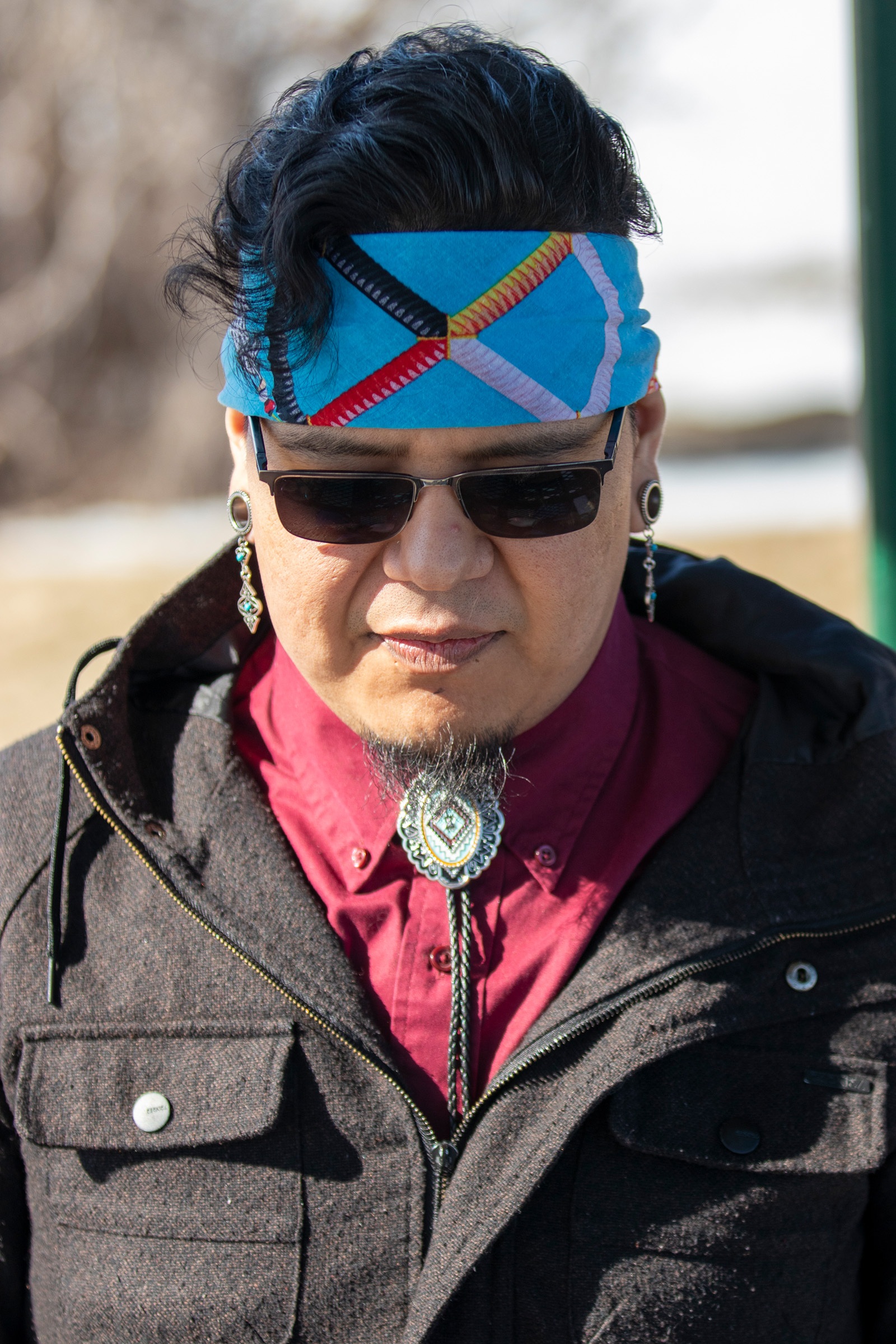
“The goal is to give them a tool, show them how to take care of it, how to maintain it,” Braided Hair III said. “And then they tell us when they don’t need us anymore. And we kind of get phased out, you know, and then they find these individuals to fill those roles. So, it’s really a beautiful protocol, or I guess, routine process that we have.”
This goal of Braided Hair III is within reach. The Tsis tsis’tas received a $1.8 million grant from the U.S. Department of Commerce in September 2022. The money will help start a renewable energy workforce training center at Chief Dull Knife College in Lame Deer.
The training center will create more than 30 full-time, permanent jobs for members of the Tsis tsis’tas, according to the U.S. Economic Development Administration press release. These permanent jobs will consist of training tribal members to build, install, and maintain solar systems, all of which are “high in-demand” in the energy industry, according to that same release.
Displaced coal workers are encouraged to get trained in the renewable energy field. On a longer-term scale, the project will aid in providing more residents on the reservation with solar power to offset energy costs.
Solar is ‘scattered’
Brady, 33, a Tsis tsis’tas tribal member, serves as the part time liaison between residents who have solar power, residents who will be getting solar power and the organization itself. Brady drives buses for her day job at the Busby School District and helps raise her four children with her wife, Erlanda.
Brady is working on the new White River Community Solar Project, funded partially by the U.S. Department of Energy and donations from NDN Collective and Grid Alternatives.
Indigenized Energy matched the rest of the funds needed.
Enlarge

“I was really excited knowing that people have solar here, but it’s almost scattered,” Brady said.
While some homes are set up with solar arrays to contribute to their energy needs, or panels to heat hot water tanks, Brady would like to see solar being utilized more widely across residents on the reservation.
The businesses and residences on the reservation get powered by two different electric co-operations: Tongue River Electric and Big Horn County Electric. Both organizations are cooperative incorporations, meaning members are part-owners of the utilities.
For houses hooked up to the grid powered by TRECO, residents are only allowed to connect their homes to solar panel arrays that generate no more than 10 kilowatts. For some families, this could be enough to power their entire home without drawing from the electric company.
Residents utilizing solar panels are still responsible for base, energy demand and seasonal customer charges, according to the terms and conditions of TRECO’s net metering interconnection standards.
This leaves on-grid residents with a power bill to the energy cooperation, even if the homes utilize only enough energy that the panels can produce. If residents produce excess energy, that energy is credited back to them to use at a later time, typically at night or cloudy days when the sun isn’t shining.
TRECO has solar panels set up just off Highway 212 in Ashland as a demonstration for what energy solar panels can provide. On their website is a real-time analysis of how much power those panels, which are capable of producing about five times as much energy as Spang’s, produce.
The live data report also estimates how much money the co-op saves by day, by year, and since the installation of the panels. In 2022, TRECO saved about six dollars a day with their demonstration panels.
If the TRECO panels only save the large co-op a few dollars a day with much higher-capacity panels than Spang, it makes sense that Spang still has an energy bill to pay each month.
Ideally, the Tsis tsis’ tas wouldn’t rely on energy cooperations at all. Energy sovereignty to Braided Hair III means leaving the old systems behind as they move forward.
Enlarge

“We’re subject to our own energy, and we abide by the things that we’ve been told since we’re young: leave it in the ground, don’t touch, don’t desecrate this earth,” Braided Hair III said. “Use what you have, but not in abundance. Take what you need, but not all of it, because you have a community. And I think that’s what a lot of tribes practice is they’re very community driven.
With grants from the U.S. government and help from organizations like Indigenized Energy, the Tsis tsis’tas are making moves on the track to energy sovereignty. They aren’t the only ones on this path, either.
The International Energy Agency is an intergovernmental organization that collects and analyzes data on the global energy sector. With their analysis, the organization makes recommendations on energy policy worldwide.
The IEA’s 2022 report on renewable energies, updated in December 2022, predicts renewable energies will “become the largest source of global electricity generation by early 2025, surpassing coal.” The amount of energy produced from solar power, along with wind power, is expected to double in the next five years, according to the report.
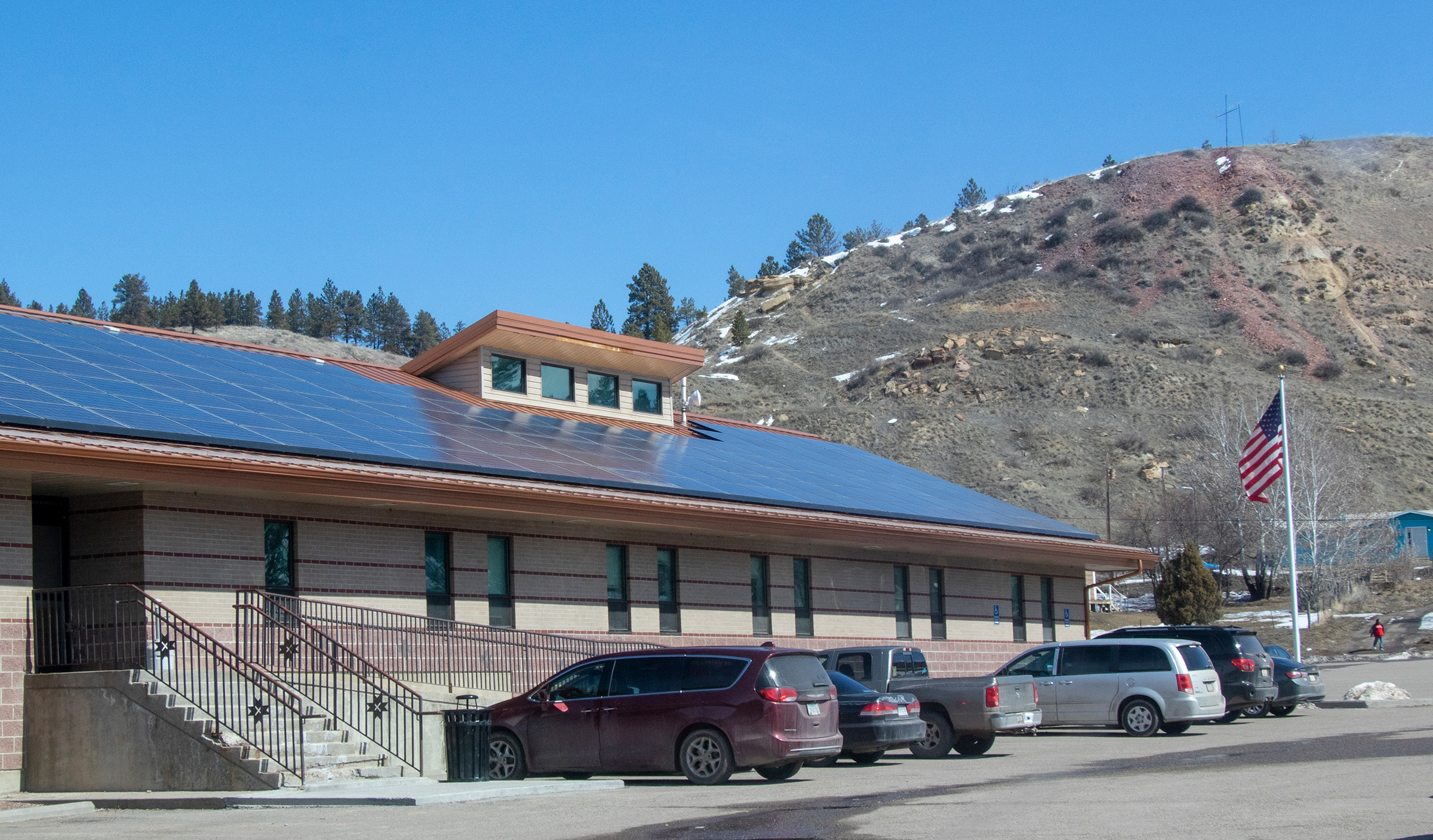
Imperfect, important solutions
The Spangs didn’t know their new home would be powered by renewable energy until one of the founders of Indigenized Energy installed solar panels on their roof. According to Spang, the team that now makes up Indigenized Energy worked tirelessly to put the panels on her roof in just a few days.
With multiple sclerosis, Spang’s electrical needs are a bit higher than the average family. Despite the solar panels, Spang said her energy bill to TRECO in February 2023 was still “well over $700.” Before the panels, she said her monthly energy bills were usually over $1000 in the winter.
“I love her stories,” Brady said while visiting Spang. Spang reminisced about her family’s trail riding company, the Cheyenne Trail Riders, which taught ethnobotany and led visitors around the vast property.
But when Spang mentioned her high energy bill, even with having solar panels, a look of concern grew on Brady’s face.
Enlarge
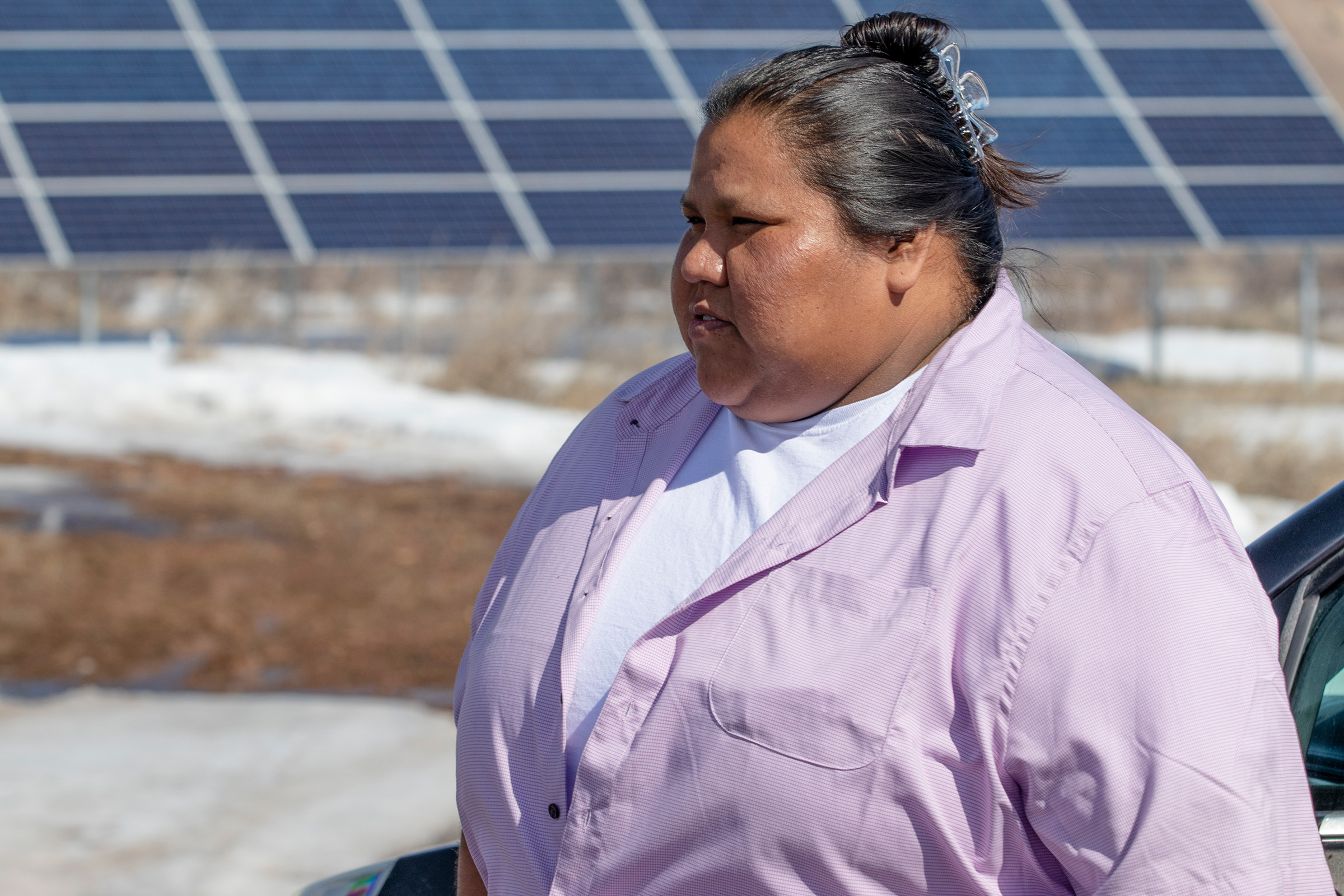
“We have never, never gotten what we thought we were going to get from them,” Spang said. “I don’t think it has worked.”
Brady went outside Spang’s house to inspect the electric meter. She pressed buttons, flipping through settings to see if anything was noticeably wrong with it. Brady later sent pictures of the meter to Braided Hair III for further inspection.
Despite her beliefs about her solar array’s effectiveness, Spang’s energy bill costs have, indeed, decreased since the installation of solar panels onto her home. Further, she knows the importance of protecting the land the Tsis tsis’tas inhabit and how renewable energy sources can play a role in that.
Every morning, Spang gets up and looks outside. When she does this, she thinks of her ancestors.

“We know the story of them, what they had to go through to come back to have this land,” Spang said. “444,000 acres that we got to be able to come and live here.”
Brady feels the same way about the land.
“Just because of how beautiful it is, how could you not want to take care of it?” Brady said.
A SPECIAL PROJECT BY THE UNIVERSITY OF MONTANA SCHOOL OF JOURNALISM
ADDITIONAL FUNDING SUPPORT FROM THE GREATER MONTANA FOUNDATION
READ MORE:
Previous
The Long Return
Next
Barriers to Buying

